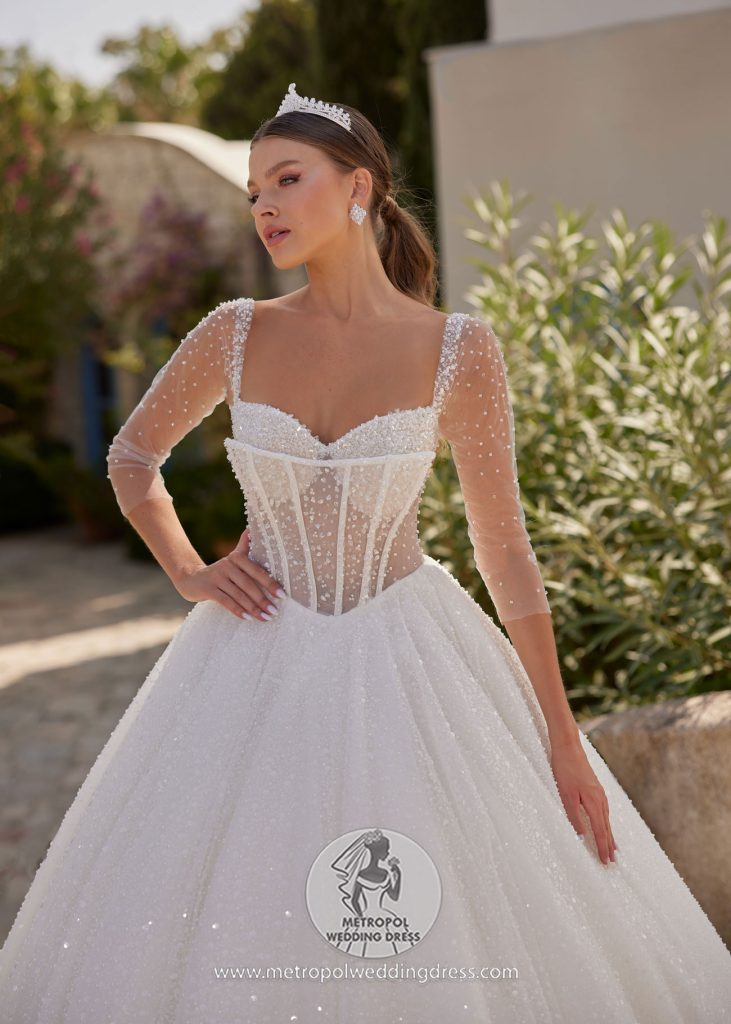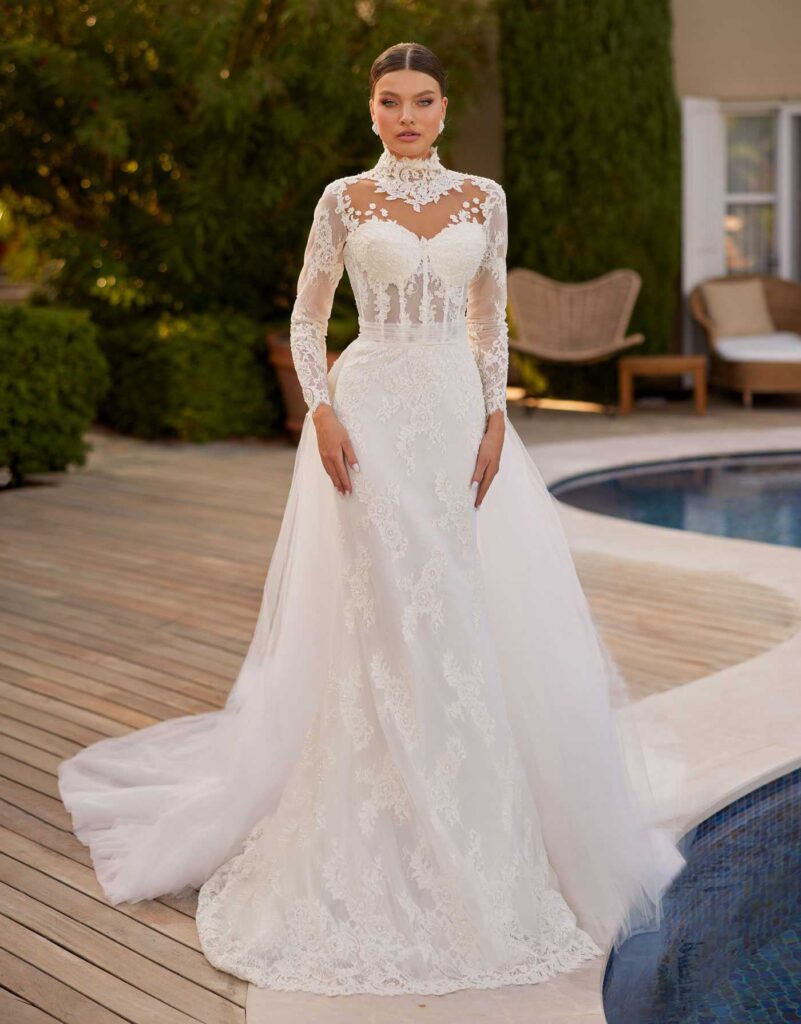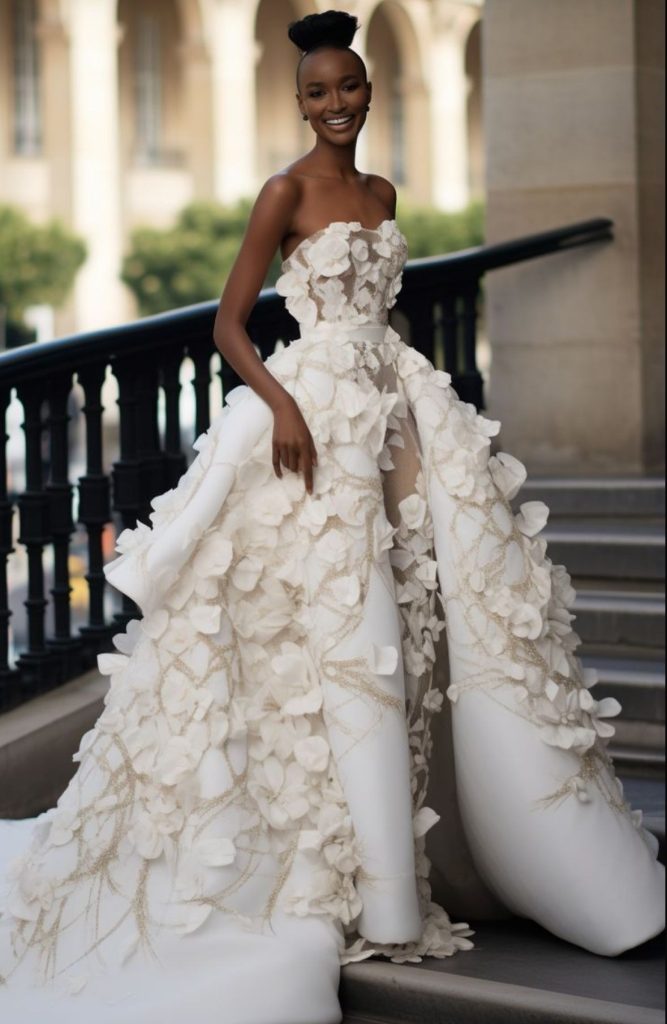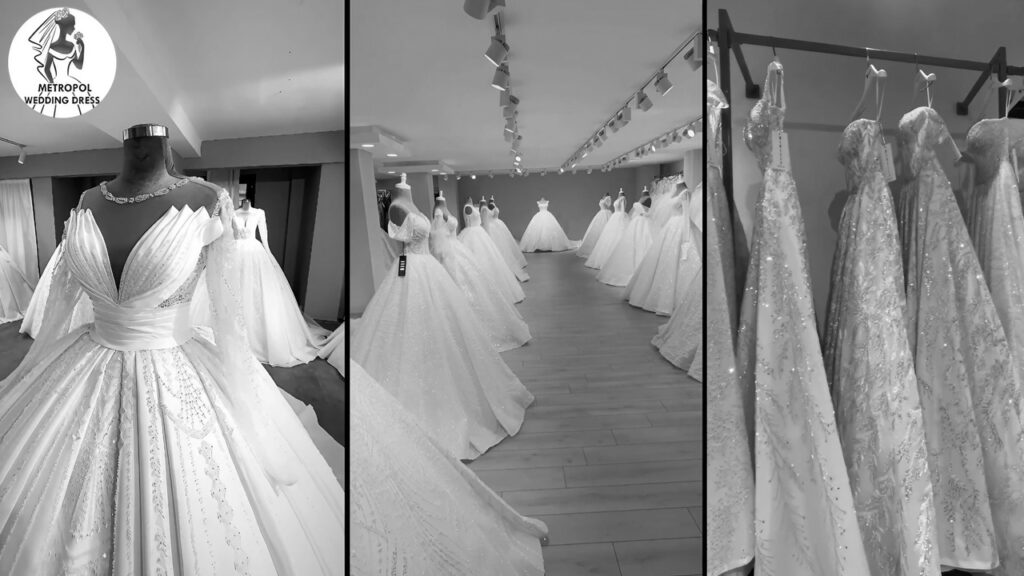
Turkish Wedding Dress With Hijab represents a harmonious blend of cultural heritage, religious values, and modern fashion sensibilities. In Turkey, where tradition and modernity coexist, bridal attire has evolved to reflect both aesthetic elegance and modesty, particularly for brides who choose to wear a hijab. This article delves into the intricate world of Turkish wedding dresses designed for hijab-wearing brides, exploring their historical roots, cultural significance, design elements, and contemporary trends.
Historical Context of Turkish Bridal Attire
Ottoman Influences on Bridal Fashion
The history of Turkish wedding dresses is deeply rooted in the Ottoman Empire, which spanned over six centuries and left an indelible mark on Turkish culture. During the Ottoman period, bridal attire was characterized by opulent fabrics, intricate embroidery, and vibrant colors. Brides often wore kaftans, long flowing robes adorned with gold and silver threadwork, which symbolized wealth and status. The use of headscarves was common, not only as a religious practice but also as a cultural norm, with elaborate headpieces complementing the bridal ensemble.
The hijab, as a religious and cultural symbol, was not always a mandatory element in Ottoman bridal attire. However, for Muslim women who chose to cover their hair, the headscarf was styled with ornate accessories such as tiaras, brooches, and veils, blending modesty with grandeur. These early influences laid the foundation for the modern Turkish wedding dress with hijab, where modesty is seamlessly integrated with luxurious aesthetics.
Transition to Modern Bridal Fashion
With the establishment of the Republic of Turkey in 1923, Western influences began to shape Turkish fashion. The adoption of Western-style wedding dresses, often white and inspired by European designs, became popular among urban elites. However, rural and conservative communities continued to favor traditional attire, including headscarves and modest dresses. Over time, the hijab became a prominent feature in bridal fashion for Muslim women, particularly as religious identity gained visibility in public life.
The late 20th and early 21st centuries saw a resurgence of interest in modest fashion, driven by global trends and the growing visibility of Muslim women in media and fashion. Turkish designers began to innovate, creating wedding dresses that catered to hijab-wearing brides while incorporating modern silhouettes, luxurious fabrics, and intricate detailing. This evolution reflects Turkey’s unique position as a bridge between East and West, where cultural heritage and contemporary style converge.
Cultural Significance of the Hijab in Turkish Weddings
The Hijab as a Symbol of Modesty and Identity
In Islam, the hijab is worn by many women as an expression of modesty, faith, and adherence to religious guidelines. In the context of Turkish weddings, the hijab serves not only as a religious symbol but also as a marker of cultural and personal identity. For many Turkish brides, wearing a hijab on their wedding day is a way to honor their values while celebrating one of the most significant moments of their lives.
The hijab is often styled with meticulous care, complementing the wedding dress to create a cohesive and elegant look. Brides may choose from a variety of headscarf styles, such as the turban, shawl, or draped veil, each offering a distinct aesthetic. The choice of hijab style is often influenced by regional traditions, personal taste, and the overall design of the wedding dress.
Regional Variations in Turkish Bridal Attire
Turkey’s diverse cultural landscape, shaped by its geographic and ethnic diversity, contributes to variations in bridal attire across different regions. In conservative regions such as Central Anatolia and the Black Sea coast, hijab-wearing brides often favor long-sleeved, floor-length dresses with minimal embellishments, paired with simple yet elegant headscarves. In contrast, urban centers like Istanbul and Izmir are known for more elaborate designs, featuring luxurious fabrics, intricate lacework, and statement headpieces.
For example, in the Aegean region, brides may opt for lightweight, flowing dresses with delicate embroidery, paired with a loosely draped hijab that exudes effortless elegance. In Eastern Anatolia, where traditional influences are strong, brides may incorporate regional motifs, such as geometric patterns or floral designs, into their dresses and headscarves. These regional variations highlight the diversity of Turkish bridal fashion and the adaptability of the hijab as a versatile accessory.
Design Elements of Turkish Wedding Dresses with Hijab
Fabrics and Textures
The choice of fabric is a critical aspect of Turkish wedding dresses, as it determines both the aesthetic and the level of modesty. Common fabrics include:
- Satin and Silk: These luxurious materials are favored for their smooth texture and subtle sheen, adding a touch of elegance to the bridal ensemble. Satin is often used for structured gowns, while silk is preferred for flowing, lightweight designs.
- Lace: Intricate lacework is a hallmark of Turkish wedding dresses, often used for sleeves, bodices, or overlays. Lace adds a delicate, feminine touch while maintaining modesty.
- Chiffon and Tulle: These lightweight, sheer fabrics are ideal for creating layered, ethereal looks. Chiffon is often used for hijabs, as it drapes beautifully and allows for creative styling.
- Velvet: In cooler seasons, velvet is a popular choice for its rich texture and warmth. Velvet dresses with hijabs are often adorned with gold or silver embroidery for a regal appearance.
Designers often combine multiple fabrics to create visual interest, such as pairing a satin bodice with a tulle skirt or layering lace over chiffon for a multidimensional effect.
Silhouettes and Styles
Turkish wedding dresses with hijab are designed to balance modesty with modern aesthetics. Common silhouettes include:
- A-Line Dresses: The A-line silhouette, with a fitted bodice and flared skirt, is a timeless choice for hijab-wearing brides. It flatters a variety of body types and allows for intricate detailing on the bodice and sleeves.
- Ball Gowns: For brides seeking a dramatic look, ball gowns with voluminous skirts and long trains are popular. These dresses are often paired with structured hijabs to maintain proportion.
- Mermaid Dresses: The mermaid silhouette, which hugs the body before flaring at the knees, is a bold choice for confident brides. Long-sleeved versions with lace or embroidery ensure modesty.
- Empire Waist Dresses: With a high waistline and flowing skirt, empire waist dresses are ideal for creating a soft, romantic look. These dresses pair well with loosely draped hijabs.
Sleeves are a key feature of modest wedding dresses, ranging from fitted lace sleeves to voluminous bell sleeves. High necklines, such as illusion necklines or mock turtlenecks, are also common, ensuring coverage while adding sophistication.
Embellishments and Detailing
Embellishments play a significant role in elevating the aesthetic of Turkish wedding dresses. Common detailing includes:
- Embroidery: Gold and silver threadwork, often inspired by Ottoman motifs, is used to create intricate patterns on bodices, sleeves, and hemlines.
- Beading and Sequins: Hand-sewn beads and sequins add sparkle and dimension, particularly on lace or tulle overlays.
- Appliqués: Floral or geometric appliqués, made from lace or satin, are applied to skirts or veils for a three-dimensional effect.
- Belts and Sashes: Embellished belts, often adorned with crystals or pearls, cinch the waist and add a focal point to the dress.
Hijabs are also adorned with embellishments, such as crystal-encrusted pins, floral appliqués, or delicate lace trim, to ensure they complement the dress.
Color Palette
While white remains the traditional color for Turkish wedding dresses, hijab-wearing brides often experiment with a broader palette. Popular colors include:
- Ivory and Cream: These soft, neutral tones are timeless and complement a variety of skin tones.
- Blush and Champagne: Subtle pastel shades add a modern twist while maintaining elegance.
- Gold and Silver: Metallic hues, inspired by Ottoman opulence, are often used for embroidery or as accent colors.
- Bold Accents: Some brides incorporate jewel tones, such as emerald green or sapphire blue, into their hijabs or accessories for a contemporary look.
- Designer Spotlights: Profiles of prominent Turkish bridal designers specializing in hijab-friendly dresses.
- Bridal Accessories: Detailed exploration of jewelry, shoes, and other accessories that complement the hijab and dress.
- Wedding Traditions: In-depth analysis of Turkish wedding customs and how they influence bridal attire.
- Global Influence: The impact of Turkish modest fashion on the international bridal market.
- Sustainability and Ethics: The rise of eco-friendly and ethically produced wedding dresses in Turkey.
- Interviews and Personal Stories: Insights from brides, designers, and stylists about their experiences with hijab-friendly wedding fashion.
Turkish wedding dress price
The price of Turkish wedding dresses varies widely based on factors like designer, fabric, craftsmanship, and whether you’re buying retail, wholesale, or custom-made. Here’s a breakdown:
- Retail Prices (Individual Purchase):
- Budget-Friendly: Basic dresses in smaller shops or markets like Istanbul’s Grand Bazaar or Lalali area start at around $200–$680 (20,000–25,000 Turkish Lira). These are often simpler designs or off-the-rack options.
- Mid-Range: Dresses with intricate lace, embroidery, or from mid-tier brands range from $680–$2,500 (25,000–90,000 Turkish Lira). These are common in boutiques in Istanbul’s Fatih or Nişantaşı districts.
- Luxury/Designer: High-end brands like Vakko or custom-made gowns by designers like Pronovias can cost $2,500–$12,000 (90,000–350,000 Turkish Lira) or more, especially for ornate Ottoman-inspired or heavily embroidered dresses.
- Wholesale Prices (Bulk Purchase):
- For retailers or boutiques, wholesale dresses from Turkey (e.g., via Istanbul Fashion Center or Amarya Bridal) typically range from $100–$2,500 per dress, depending on design and materials. Bulk buying reduces costs due to lower production expenses.
- Custom-Made Dresses:
- Tailored dresses in Istanbul, especially in Fatih or Antalya’s Gençlik neighborhood, start at $250–$2,000. Prices depend on complexity (e.g., silk, velvet, or gold embroidery) and the tailor’s reputation. Allow 4+ months for completion to avoid delays.
- Online and Second-Hand Options:
- Online platforms like Abiyefon, ModaNisa, or AliExpress offer dresses from $200–$3,000, with international shipping.
- Second-hand dresses on platforms like Sahibinden or eBay can be as low as $200–$1,000, though customs taxes may apply for international buyers.
- A 2025 X post noted a bride’s budget dress at 1,651 TL ($50–$60), but this is unusually low and likely second-hand or heavily discounted.
Tips:
- Shop in the off-season (winter) for discounts.
- In smaller shops, prices are negotiable, but language barriers may require a translator.
- For custom orders, confirm sizing and provide clear design references to avoid issues.
- Istanbul’s Fatih (Fevzi Paşa St.) and Nişantaşı are key areas for wedding dress shopping.
Prices are approximate and based on 2025 data, with exchange rates fluctuating (1 USD ≈ 34–36 TL). For specific designers or stores, check sites like Vakko, Abiyefon, or Pronovias for updated pricing. If you have a budget or style in mind, I can narrow this down further
Turkish Wedding Dress White
White wedding dresses have become increasingly popular in modern Turkish weddings, influenced by Western bridal fashion and popularized in Turkey since the late 19th century. Historically, traditional Turkish wedding dresses were often red, symbolizing joy, prosperity, and fertility, or featured vibrant colors like gold and green with intricate embroidery and luxurious fabrics such as silk, velvet, or satin. These traditional gowns, like the Ottoman-inspired bindallı, were adorned with gold embroidery, beading, and symbolic motifs representing cultural heritage, family background, and marital blessings.
Today, white wedding dresses in Turkey align with global trends, featuring styles like A-line, mermaid, or ball gowns, often with delicate lace, tulle, or satin, and intricate detailing such as hand-embroidered accents or beading. Designers blend traditional elements, like subtle red accents (e.g., a sash or embroidery), with modern minimalist or elegant designs to honor both heritage and contemporary tastes. Istanbul is a hub for bridal fashion, with boutiques in areas like Nişantaşı offering custom-made and ready-to-wear white gowns, while wholesale markets like Istanbul Fashion Center provide affordable, high-quality options for retailers, with prices ranging from $100 to $2,500 depending on craftsmanship and materials.
For cultural context, brides may pair a white dress with a red ribbon or veil, tied around the waist by a male relative, symbolizing luck and purity, especially during traditions like the Henna Night (Kına Gecesi). Guests are advised not to wear white to avoid overshadowing the bride. If you’re seeking a specific style, designer, or purchasing option (e.g., custom-made or wholesale), let me know, and I can provide more tailored details
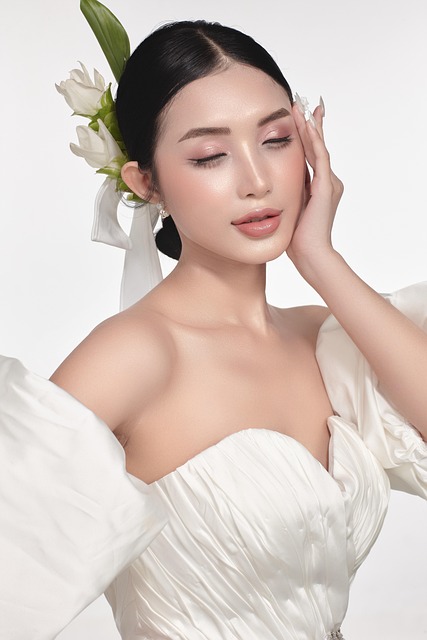
Turkish wedding Dress guest
As a guest attending a Turkish wedding, your attire should be stylish, formal, and respectful of cultural norms, which can vary depending on the setting (urban or rural) and the family’s traditions. Here’s a concise guide based on cultural insights:
For Women:
- Dress Code: Opt for elegant, formal attire such as floor-length gowns, midi dresses, or chic cocktail dresses. Bright, vibrant colors are encouraged, but avoid white (reserved for the bride) and, in some cases, red or pink, as these may be associated with bridal attire.
- Modesty: If the wedding is conservative or in a rural area, choose modest dresses with covered shoulders, no cleavage, and lengths at or below the knee. Cap sleeves or a light shawl can ensure modesty without sacrificing style.
- Accessories: Jewelry, makeup, and high heels are popular, but keep accessories tasteful. Avoid large, everyday bags; opt for a small, stylish clutch.
- Shoes: Comfort is key due to standing and dancing. Consider bringing comfortable shoes to switch into if wearing heels.
- Colors: Black is acceptable, unlike in some Western traditions, but brighter colors are often preferred for a festive vibe.
For Men:
- Wear a suit or tuxedo in a classic color like navy, black, or grey. A tie is recommended, especially for closer family members. In small village weddings, the dress code may be more relaxed, but smart attire is still expected.
Cultural Tips:
- Urban weddings in cities like Istanbul often resemble European-style ceremonies with modern, formal attire. Village or conservative weddings may emphasize modesty and traditional elements.
- Check the invitation for dress code cues, as some couples specify preferences.
- Avoid overly revealing or short dresses to respect the occasion, especially if it includes a religious component.
Gift Tip: Guests typically give gold coins, jewelry, or cash, often pinned to a ribbon on the couple during the reception, instead of traditional registry gifts.
If you have details about the wedding’s location, style, or the couple’s preferences, I can tailor this advice further! Would you like tips on specific dress styles or shopping options?
Turkish Wedding Dress Male
In Turkish weddings, men’s attire blends formal and traditional elements, reflecting elegance and cultural heritage. Common components include:
- Formal Suit: Most grooms wear a tailored suit, typically in dark colors like black, navy, or charcoal. The suit includes a jacket, waistcoat, trousers, white shirt, and a tie or bow tie. Slim-fit or classic cuts are popular, emphasizing a sharp, sophisticated look.
- Traditional Elements: In more traditional or regional weddings, grooms may incorporate cultural garments:
- Fes (Hat): A red felt cylindrical hat with a tassel, often embroidered or adorned with metal accents.
- Ceket or Yelek: A traditional jacket or vest, sometimes worn over a shirt and trousers, featuring regional embroidery or motifs.
- Bindallı-Inspired Details: While bindallı dresses are typically for brides, men may wear garments with similar intricate embroidery or luxurious fabrics like silk or velvet in traditional settings.
- Accessories: Grooms often accessorize with cufflinks, a pocket square, polished leather shoes, and sometimes jewelry like rings or watches. In some regions, a sash or decorative belt may be added for cultural flair.
- Cultural Fusion: Modern grooms may mix Western and Turkish styles, such as pairing a suit with a traditional tie or hat, reflecting personal taste and cultural heritage.
The attire varies by region, family traditions, and personal preference. Urban weddings lean toward formal suits, while rural or traditional ceremonies may emphasize cultural garments. For guests, men typically wear suits, avoiding overly casual clothing to respect the occasion’s formality.
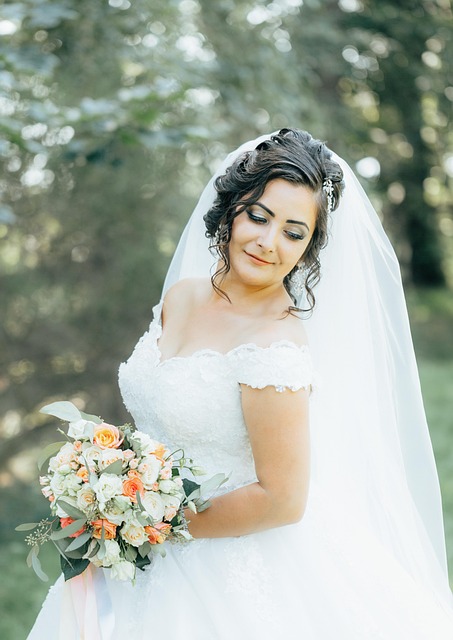
Wedding dress Turkey online shop
Turkey is a hub for stunning wedding dresses, blending traditional craftsmanship with modern designs at competitive prices. Here are some top online shops based in Turkey or offering Turkish wedding dresses, catering to various styles and budgets:
- Istanbul Fashion Center (istanbulfashioncenter.com): Specializes in wholesale wedding dresses for retailers, offering 2025 models from brands like Abbride Bridal and White House Bridal. Features A-line, bohemian, and custom designs with intricate lace and luxurious fabrics. Ideal for bulk orders with no middlemen.
- Amarya Bridal (amaryabridal.com): Turkey’s leading wholesaler for wedding and evening dresses. Offers designer-quality gowns like mermaid, ball, and long-sleeve lace dresses at affordable prices. Provides customization for a bespoke experience.
- BuGelinlik (bugelinlik.com): Istanbul-based bridal shop with custom-made dresses tailored to your measurements. Upload a photo for a replica or browse 2024 trend models. Offers 100% satisfaction guarantee and competitive pricing.
- Metropol Wedding Dress (metropolweddingdress.com): Manufacturer offering glamorous gowns with beadwork and sequins. Supports custom designs and international shipping. Great for brides or boutiques seeking high-quality, affordable options.
- AKAY Wedding House (akay.com.tr): Features elegant A-cut, fishtail, and princess dresses with modern and vintage-inspired designs. Exclusive models available only at their Istanbul showroom, but online browsing and appointments are offered.
- Couture Eye (coutureeye.com): Over 20 years of experience crafting custom bridal gowns. Works with European bridal shops and offers tailored dresses for individual brides. Contact for catalog access.
- AliExpress (aliexpress.com): Offers a wide range of Turkish-inspired wedding dresses at budget-friendly prices. Includes free shipping options and styles like mermaid and A-line with lace or beading. Check reviews and size guides for accuracy.
- DHgate (dhgate.com): Bulk deals on Turkish-style dresses, including mermaid, A-line, and kaftan designs with embroidery or floral appliqués. Fast delivery and low prices, but verify seller ratings.
Tips for Shopping:
- Customization: Many Turkish shops offer bespoke services. Provide exact measurements and discuss alterations (e.g., removing trains or adjusting necklines) for a perfect fit.
- Shipping: Most offer worldwide shipping, but check delivery times (9-15 weeks recommended for custom orders).
- Sizing: Asian sizes may run small; check measurements and consider sizing up.
- Budget: Turkish dresses are cost-effective, with options from affordable (AliExpress, DHgate) to luxury bespoke (AKAY, Couture Eye).
- Styles: Popular Turkish designs include A-line, mermaid, bohemian, and modest gowns with lace, satin, or tulle. Red dresses symbolize joy in Turkish culture, while Ottoman-inspired gowns add heritage.
For a civil wedding, consider simpler, modern designs like minimalist A-line or two-piece sets, which are versatile and less formal. If you need a specific style (e.g., no train, sleeveless), contact the shop directly for alterations. For further assistance, I can search for specific designs or check X for recent brides’ recommendations—let me know
Turkish wedding dress boutiques
Istanbul is the heart of Turkey’s bridal fashion, offering a range of boutiques from luxury to affordable. Here are some notable ones based on recent information:
- Pronovias: A global brand with three Istanbul locations (Zorlu Center, Bagdat Street, Istinye Park). Known for chic, exclusive collections, but service can vary, and prices are higher due to import costs. Appointment-only.
- Nova Bella: Located in Sisli, this boutique offers stylish dresses with lace motifs and Swarovski embellishments. It’s praised for its exclusive, artful designs.
- Akay: A major Turkish brand since 1976, with three stores in Kadikoy and Bakirkoy. Known for unique, high-quality dresses and a wide range of styles like A-cut, princess, and fishtail. Appointment recommended.
- Atelier Mila: In Kadikoy, this boutique has over a decade of experience, offering modern, high-quality designs with fast service and reasonable prices. Popular for custom orders.
- Vakko Wedding House: An upscale option in Nisantasi with a large bridal section featuring international designers. Expect premium prices, but the service is professional.
- Beyaz Butik and La Mariee Atelier: Located in Fatih and Nisantasi, these are smaller boutiques with diverse designs. La Mariee is noted for quality, though communication may be challenging without Turkish.
- Istanbul Fashion Center: Not a boutique but a wholesale hub for retailers, offering bulk Turkish wedding dresses from brands like Abbride Bridal and Bella Vista. Ideal for boutique owners seeking variety and affordability.
Tips:
- Fatih and Nisantasi are key areas for wedding dress shopping. Fatih has many shops with “princess” or ball gown styles, while Nisantasi offers upscale boutiques.
- Prices vary: expect $5,000–$20,000 USD for luxury brands like Galia Lahav, while local boutiques may start lower. Bargaining is possible in smaller shops, but English fluency can be limited—consider a translator.
- Book appointments early, especially for custom designs, as tailoring can take months. Bring a photo of your dream dress and wear your wedding shoes for fittings.
- Styles range from traditional Ottoman-inspired gowns with rich embroidery to modern minimalist or mermaid designs. A-line dresses with lace are particularly popular.
For online options, check Abiyefon or DreamON, which ship worldwide and offer diverse styles, though in-person fittings are recommended for fit. If you’re not in Istanbul, Izmir also has notable boutiques like Metropol Wedding Dress, known for quality and wholesale options.
Given your past interest in Istanbul wedding dresses and manufacturers, would you like specific recommendations for online shops or details on a particular style?


